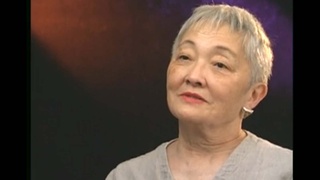Entrevistas
Coming back to America from Japan before the war
After I got back, I got to go to work again with my mother. And then the FBI come. They think I was hiding something, that was something else. I said, “Look for yourself.” I have nothing to hide, you know.
I was in Japan yeah. They thought I could be a spy or something. They looked little cellar and little house. In those days my mother used to make daikon no tsukemono in the big taru there. They used to tip that thing over. All that hard work there. I mean, they did everything that was wrong.
They thought we were hiding that thing or signaling. Look for yourself. Nothing like that. So they go under the basement, under the cellar and find barrel of daikon no tsukemono and that’s it. There’s nothing to hide.
Fecha: May 24, 2011
Zona: California, US
Entrevista: John Esaki
País: Watase Media Arts Center, Japanese American National Museum








